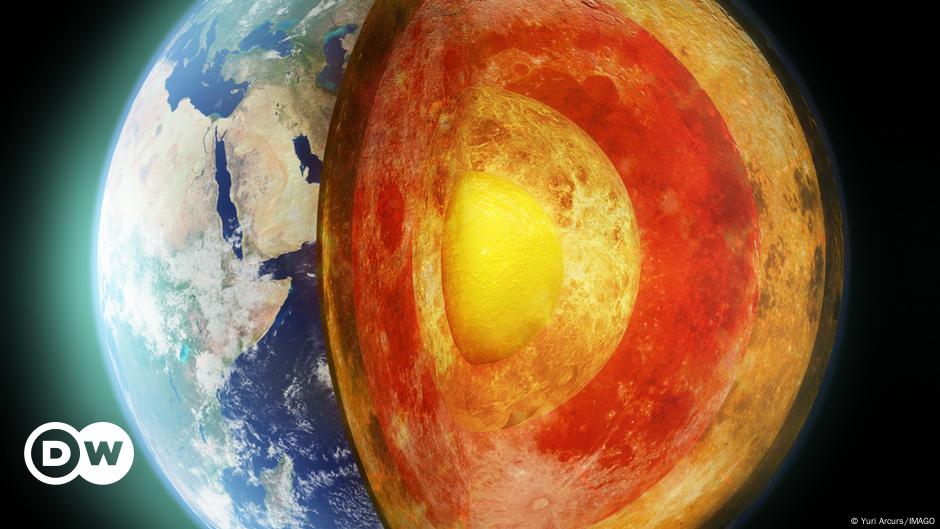The rotation of the Earth’s inner core is slowing down – DW – 06/21/2024

Recent research conducted by the University of Southern California (USC) has revealed an intriguing phenomenon: the rotation of the Earth’s inner core has slowed significantly compared to the planet’s surface over the past 14 years.
This discovery was published in the journal Nature, raises new questions about the internal dynamics of our planet and its possible consequences on the surface. Moreover, the researchers note that if this mysterious trend continues, it could lengthen days on Earth, although the consequences would be imperceptible to us.
The inner core, a super-dense fiery sphere of iron and nickel the size of the moon located more than 4,800 kilometers below the Earth’s surface, is a difficult object to study. What is known, however, is that this core is surrounded by another outer core of molten metal, and both are encased in the Earth’s mantle, a solid layer of rock. Although the entire planet rotates, the inner core can move at different speeds due to the viscosity of the outer core.
‘Unambiguous’ evidence that the core has slowed down
For more than two decades, scientists have debated the speed of rotation of this mysterious inner core, knowing for 40 years that it tends to spin slightly faster than the crust and mantle. However, a recent study by John Vidale, a professor of geosciences at the University of Southern California, marks a turning point, showing “with unequivocal evidence” that this core has begun to slow down since 2010.
“When I first saw the seismograms hinting at this change, I was puzzled,” Vidale said. “But when we discovered two dozen more observations pointing to the same pattern, the result was inevitable. The inner core slowed for the first time in decades. Other scientists have recently advocated similar and different models, but our latest study offers a more compelling solution,” he added.
To study these movements, scientists like Vidale use seismic waves generated by earthquakes and nuclear tests. This particular study analyzed data from 121 repeat earthquakes in the South Sandwich Islands and old nuclear tests, allowing the team to gain a clearer picture of the core’s behavior.
Why is this slowdown happening?
According to Vidale, the results of their study suggest that the change in the speed of rotation of the inner core could be influenced by the excitation of the surrounding liquid iron outer core, which is responsible for generating the Earth’s magnetic field as well as the gravitational field. the strength of the rocky mantle surrounding it. Despite the complexity of these processes, researchers believe that these movements do not imply an immediate risk of natural disasters.
On the other hand, although the effects of this phenomenon are small, the study shows that it could affect the length of days on Earth. But there is no reason to worry: the changes will occur only in a fraction of a second, so small that they will be almost unnoticeable, lost in the “noise” of the oceans and atmosphere, as Vidale explained. In other words, there is no need to adjust the clock yet.
“The dance of the inner core may be even more animated than we know so far,” commented Vidale, emphasizing the importance of continuing to monitor and study these geological depths.
Felipe Espinosa Wang with information from USC and Nature.
